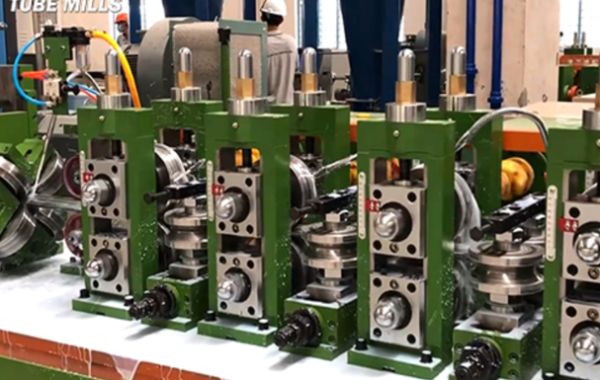High frequency welding is an important process used in the manufacturing of steel pipes. However, several factors can significantly affect the quality and efficiency of the welding process. In this article, we will discuss four main factors that influence high frequency welding.
Frequency
The frequency of the high frequency welding current has a significant impact on the welding process. The frequency determines the distribution of the current inside the steel plate. Higher frequencies are preferred for increased welding efficiency as they result in smaller heat-affected zones. For example, a 100KHz current can penetrate 0.1mm into ferrous steel, while a 400KHz current can only penetrate 0.04mm. Therefore, the latter has a higher current density distribution on the surface of the steel plate compared to the former.
In general, a frequency range of 350KHz to 450KHz is recommended for welding carbon steel, while a lower frequency range of 50KHz to 150KHz is suitable for welding alloy steel with chromium, zinc, copper, aluminum, etc. elements. Solid-state high-frequency technology is currently used by most foreign high-frequency equipment manufacturers, which can automatically adjust the frequency based on material thickness and machine speed during welding.
Contact Angle
The contact angle refers to the angle formed when the two sides of the steel pipe enter the extrusion point during welding. The size of the contact angle directly influences the molten zone’s stability during welding.
A small contact angle results in significant adjacent effects, which can increase welding speed but also cause longer heat-affected zones and unstable flashing, leading to deep pits and pinholes. Conversely, a large contact angle results in shorter molten zones and more stable flashing but reduces adjacent effects, decreasing welding efficiency and increasing power consumption. An angle range of 2° to 6° is recommended for adjusting the contact angle, with smaller angles used for faster speed during welding thin sheets and larger angles for slower speed during welding thicker plates.
Welding Method
High frequency welding has two primary methods: contact welding and induction welding. Contact welding uses a pair of copper electrodes to join the steel plate by direct contact, resulting in good current penetration and high welding efficiency with low power consumption. This method is widely used in high-speed, low-precision pipe production and thick steel pipe welding.
However, contact welding has some disadvantages, including rapid electrode wear and poor current stability due to the steel plate’s surface roughness and straightness. As a result, it is not suitable for welding high-precision and thin-walled pipes. Induction welding, on the other hand, uses one or more induction coils wrapped around the outside of the steel pipe. This method does not require direct contact between the copper electrode and steel plate, leading to improved current stability and better weld quality.
Input Power
The input power during high frequency welding is crucial to ensure successful welding. Insufficient power results in incomplete welding, while excessive power causes overburning, leading to severe defects such as spatter, pinholes, and slag inclusion. Hence, the input power should be adjusted based on the thickness of the pipe wall and the forming speed of the machine.
In conclusion
The above factors play an essential role in high frequency welding. A thorough understanding of these factors can help improve the quality and efficiency of the welding process.







